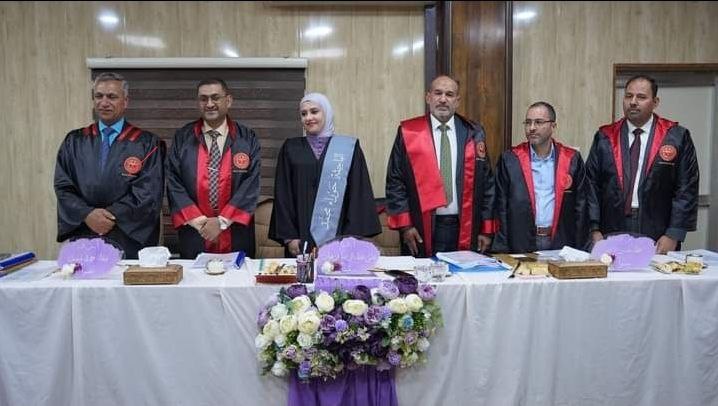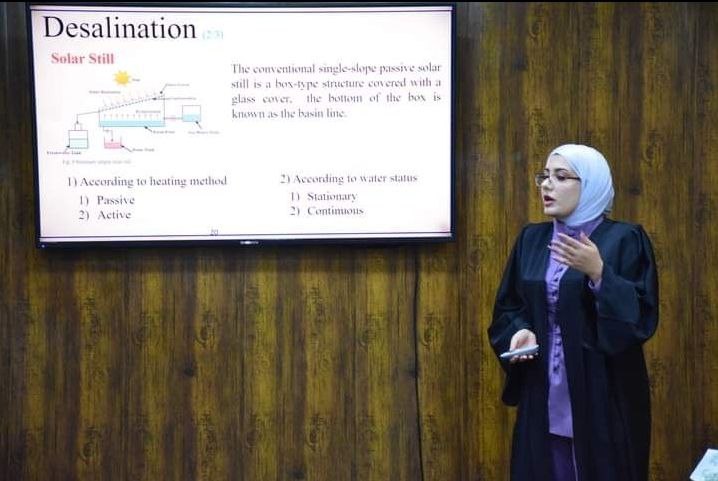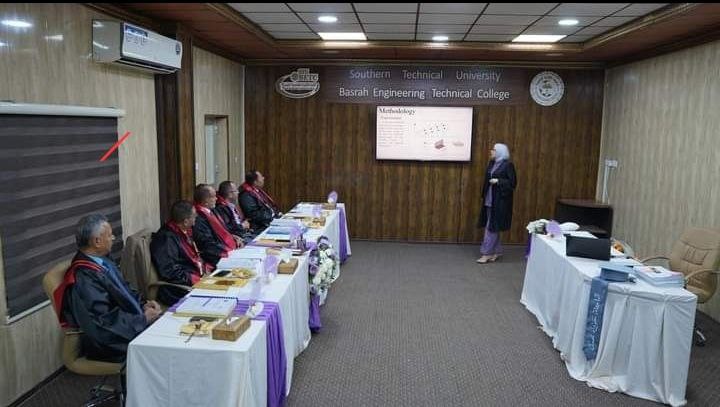Basra Technical College of Engineering discussed a master’s thesis on the performance evaluation of a solar water distiller integrated with a thermal storage system for graduate student Hawra Mohammed Murtadha, Department of Thermal Mechanics Engineering Technology, under the supervision and attendance of the President of the Southern Technical University, Professor Dr. Adnan Abdullah Atiq, and the attendance of the Dean of the College, Assistant Professor Dr. Laila Balasem Hashim. The discussion committee consisted of: Professor Dr. Ali Abdul-Ridha Farhan / University of Wasit / Chairman Assistant Professor Dr. Safaa Hamid Faisal / Southern Technical University, Technical College of Engineering, Basra / Member Lecturer Dr. Ahmed Hassan Nasser / Southern Technical University, Technical College of Engineering, Basra / Member Professor Dr. Adnan Abdullah Atiq / Southern Technical University / President of the University, Member and Supervisor Assistant Professor Dr. Tahseen Ali Jabbar, Southern Technical University / Technical College of Engineering, Basra / Member and Supervisor The study concluded that there is a need for fresh water in light of the limited availability of potable water, which prompted researchers to explore ways to convert salt water into fresh water using clean energy, as solar distillation technology is an effective means of desalinating water, but it suffers from low productivity
The most important of which are flow, storage capacity, and the effect of absorption aids, in addition to the dimensions of the distiller. She also studied the continuous flow system (CLCFISS) and the use of recycling techniques to achieve optimal heating. In her study, the researcher theoretically reached a simplification methodology for analyzing the system using the (ANSYS) program. It was found that reducing the depth of the water and increasing the thickness of the basin led to an increase in productivity. In terms of the effect of the dimensions of the distiller, the highest productivity was obtained when reducing the height and fixing the length-to-width ratio between 2 and 3. On the scientific side, it was found that increasing the water flows to the optimal point (Optimum Point) up to productivity by 1238.93%, and improving the selection of the optimal thermal capacity of the tank by 15.81%, and it was also found that adding appropriate materials that help specialize up to productivity by 178.85, which led to an increase in productivity from 160 grams per square meter to 4916 grams per square meter over twenty-four hours of operation within the geographical and design limits. After a solid scientific discussion, the student received an excellent rating




